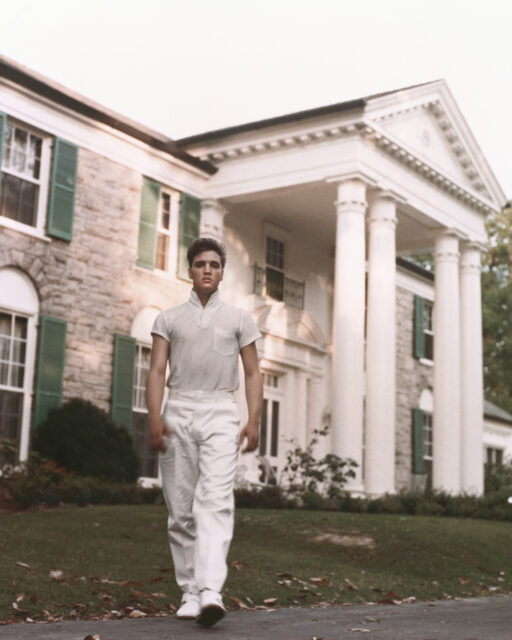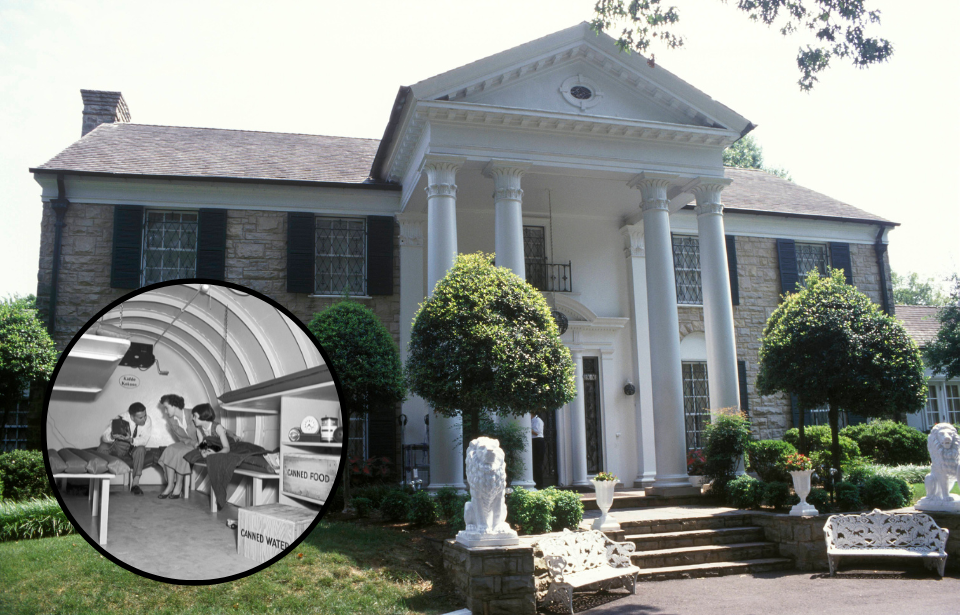Arguably, one of the most popular and well-known historical sites in Memphis, Tennessee, is Elvis Presley’s Graceland home. It holds such significance that even Highway 51, the street it sits on, was renamed Elvis Presley Boulevard. However, not far from Graceland sits another significant historical site that Elvis himself may have had access to: the world’s largest private bunker.
Graceland is not far from the shelter

In 1957, Elvis Presley moved himself and his family into Graceland in the Whitehaven area of Memphis. While his home served as a quiet place where he could escape from the attention and noise of his fame, Whitehaven offered another resident a means of escape from a far more dangerous and looming threat at the time.
Just three miles away from Graceland, longtime Whitehaven resident Hoyt Wooten built the world’s largest private bomb shelter. Wooten was a Memphis celebrity in his own right, being the founder and owner of the first radio and television station in Memphis called WREC Radio and Television. Wooten built his mansion on 27 acres of land around 1938, and about five years after the Presleys moved into the area, he began constructing the shelter beneath his property in response to the Cold War.
The shelter was quite impressive
Memphis resident, Hoyt B. Wooten is known for constructing the world’s largest private bomb shelter. https://t.co/Mq1KFt9m9y pic.twitter.com/05ibpCO6fW
— Memphis Type History (@memphistype) January 24, 2018
Construction of the bomb shelter began in 1961, a year before tensions reached a peak during the Cuban Missile Crisis. Believing nuclear fallout was imminent, Wooten hired Memphis architect and interior designer William Nowland Van Powell to design and create the massive shelter. Over the course of two years, a 5,600 square feet large shelter was constructed, dug 15 feet below the ground at the cost of $155,000.
Comprised of 11 rooms and capable of housing up to 65 people comfortably for a month, the shelter featured several amenities, including both men’s and women’s dormitories, men’s and women’s bathrooms, and even a morgue. As described by a contemporary local newspaper, “It has a restaurant-style kitchen. Food is stored beneath the double-decked bunks. Two giant electric generators supply power and filter the air. Two submerged wells furnish water. A game room contains a pool table and ping pong table.”
Considering he was a radio and television specialist, it is no surprise that the shelter was also equipped with its own “radio control room from where he can communicate with any place in the world.” Preparing for serious destruction, Wooten also equipped the shelter with “Civil Defense radio equipment and emergency transmitters that would keep WREC on the air.”
The fate of the shelter after Wooten’s death
Shot of Hoyt B. Wooten’s bomb shelter being built in the early 1960s. 3/3. pic.twitter.com/bdaFBk3VDE
— Bill Geerhart (@CONELRAD6401240) August 17, 2022
While the Cuban Missile Crisis was eventually subdued, the Cold War continued to loom. However, by June 1963, Wooten had begun to give guided public tours through his shelter. He continued to do so until his death in 1969, but swiftly afterward, the fate of the shelter became uncertain. For years, the local authorities were unsure of what to do with the massive bunker.
It wasn’t until the early 1980s that the property was turned into Whitehaven’s 38-acre Lion’s Gate housing development. As the bomb shelter was located underneath this property, it became a recreation center for the residents at Lion’s Gate. It was listed on the National Register of Historic Places in 2019 and, as of 2023, has a commemorative marker placed outside of the shelter. Lion’s Gate Owners Association President Lauren Holland commented on the marker, saying, “Lions Gate is a special place, as is Memphis. This designation memorializes our sentiment and makes it official. It means so much to our neighbors and me.”
Read more: Did Marilyn Monroe Have a Secret Husband?
We wonder if Elvis ever took a tour for himself?…
